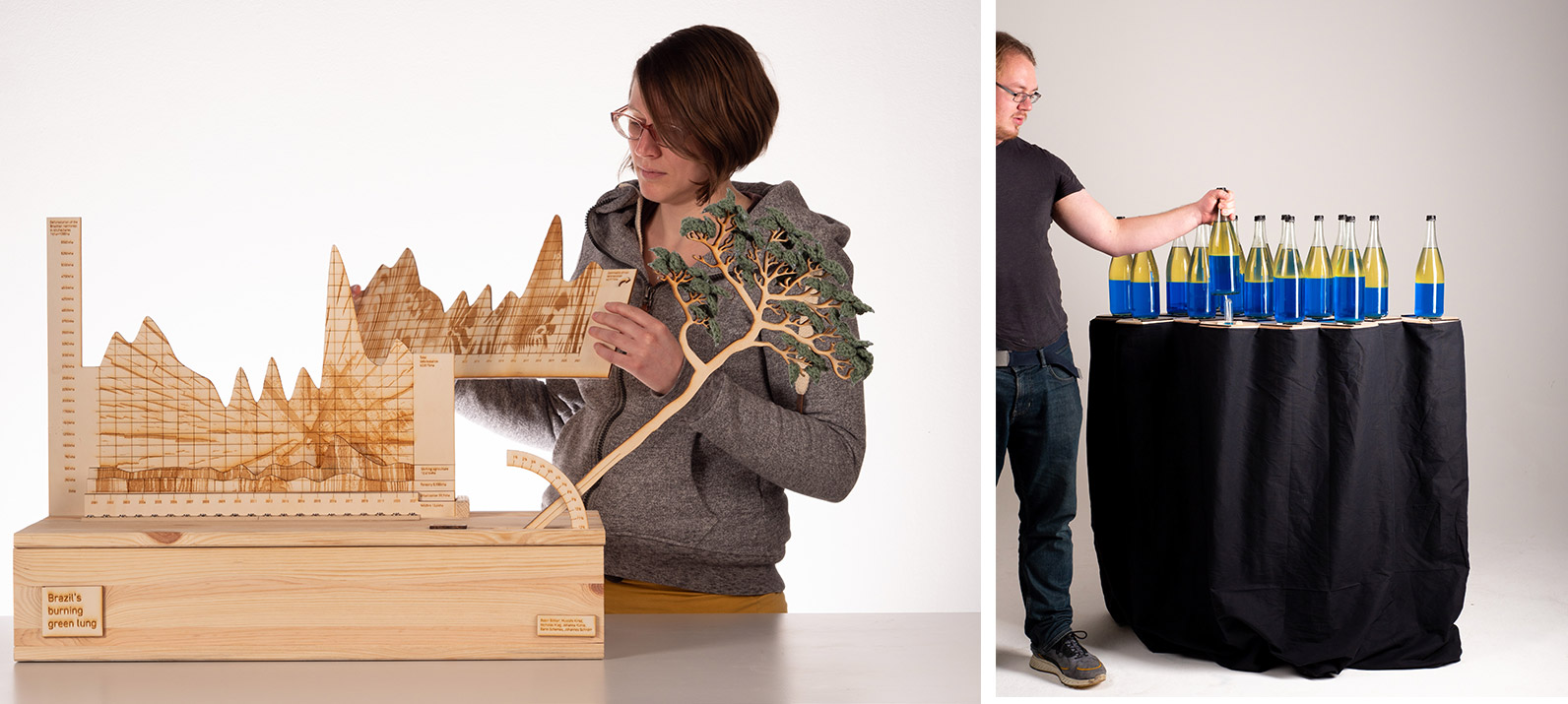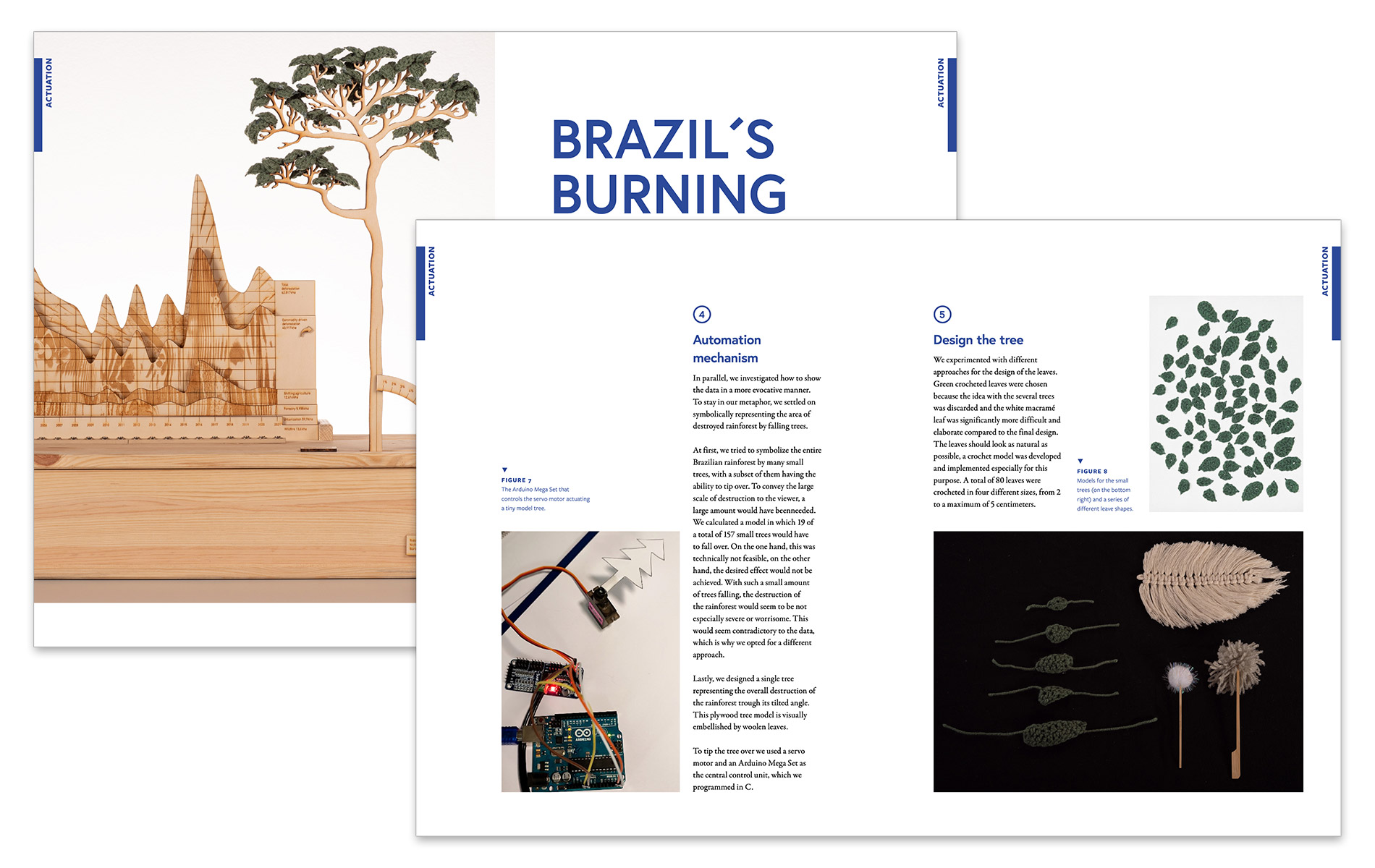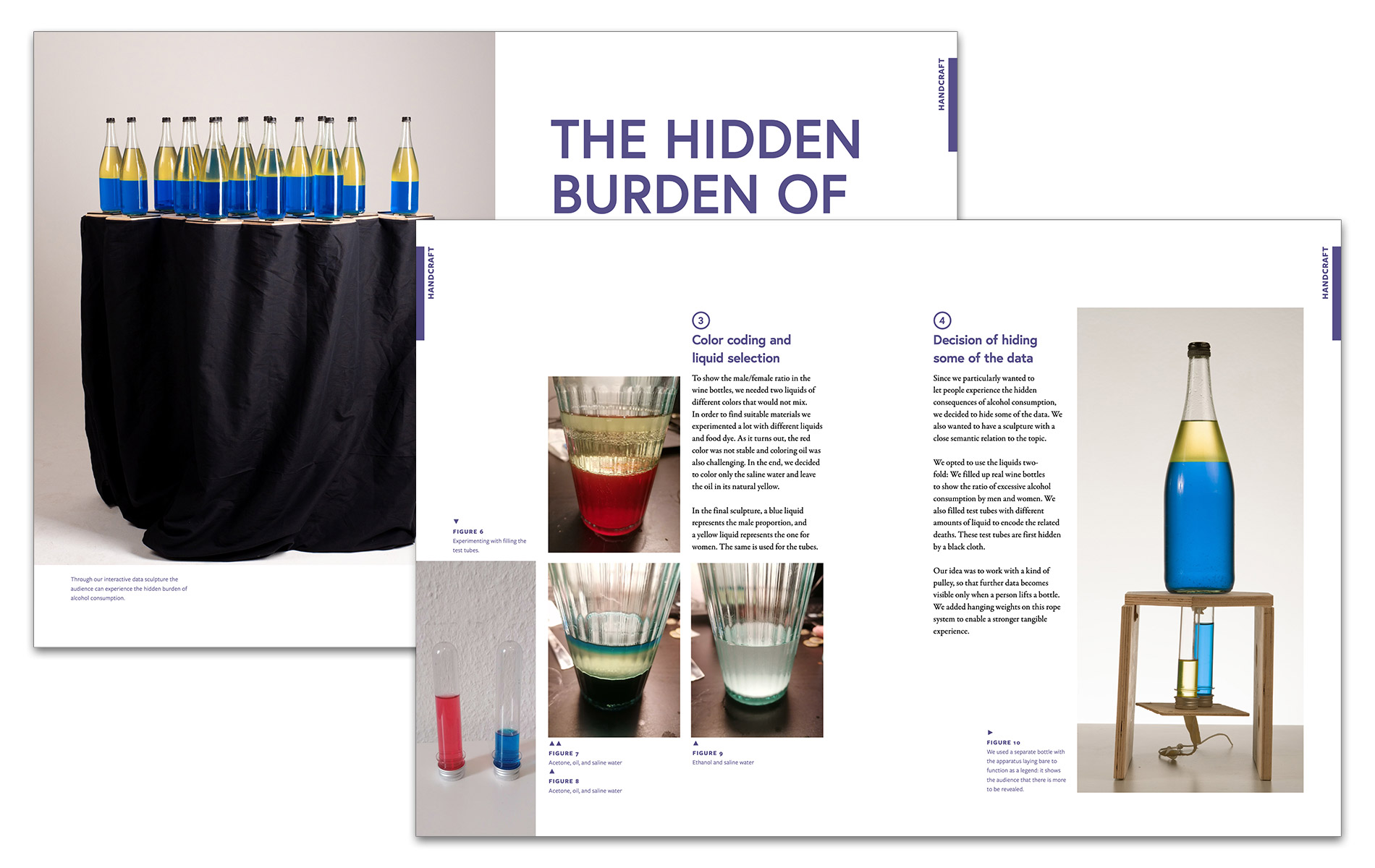These works are the results from a course on data physicalizations in the module “Applied Project: Visualization (APV)” with this year’s theme inspired by our book Making with Data.

Brazil’s Burning Green Lung (left), The Hidden Burden of Alcohol (right).
Brazil’s Burning Green Lung seeks to shed light on the factors that have contributed to deforestation in the Brazilian rainforest. Its centerpiece is a sculpture consisting of laser engraved wooden charts and an interactive falling tree, showing the diminishing rainforest area.
Johanna Kühle, Nicholas Klag, Barin Schemes, Mustafa Kiraz, Johannes Schnörr, and Robin Böhler. 2023. Mannheim University of Applied Sciences
Check out the documentation of Brazil’s Burning Green Lung (PDF).

Documentation of the design process of Brazil’s Burning Green Lung.
The Hidden Burden of Alcohol utilizes an innovative approach that encourages people to actively engage with the data. By lifting a weighted bottle, users are able to physically feel the amount of alcohol consumed in Germany and the associated fatalities, resulting in a more tangible and impactful experience.
Alexander Kravatzky, Floris Wittner, Hannah Braun, Christian Fagherazzi, and Hadi Saleh. 2023. Mannheim University of Applied Sciences
Check out the documentation of The Hidden Burden of Alcohol (PDF).

Documentation of the design process of The Hidden Burden of Alcohol.
Course
These works are the results from a course on data physicalizations in the module “Applied Project: Visualization (APV)” with this year’s theme inspired by our book Making with Data.
The course aims to stimulate enquiry-based learning and encourages students to explore the topic in an open-ended manner. Besides a working prototype, a major course outcome is the documentation of the design process. After a series of introductory lectures on data objects, materials and tools, Samuel Huron gave a guest lecture on how to use physicalizations in learning, creativity, and self-reflection activities. Over the semester, students shifted between data explorations, material experimentations, and visits to the maker space of the university.
Documentation
For documenting their iterative design process in constructing their pieces, the students used a slightly modified version of the Making with Data Template. This template has been used for the book to collect “a series of practical examples that highlight the diverse range of different ways in which people create physical data objects, documenting the many considerations and decisions that are required to translate data into physical form.” We are happy that we were able to use not only the template but the layout of the book, wonderfully designed by Elodie Maigné. We thank Johanna Kühle for applying the Indesign template and designing the final project documents with her keen eye.
Acknowledgements
We thank the inno.space for their support and guidance in utilizing the various tools in their maker space, especially Manuel Walter, Clara Dieing, Damian Wrobel, and Kirstin Kohler. We also thank Sarah Hayes and Samuel Huron for their invalueable feedback for the final presentations. And finally, thanks to my co-editors Samuel Huron, Lora Oehlberg, and Wesley Willett for the wonderful collaboration on writing the book.